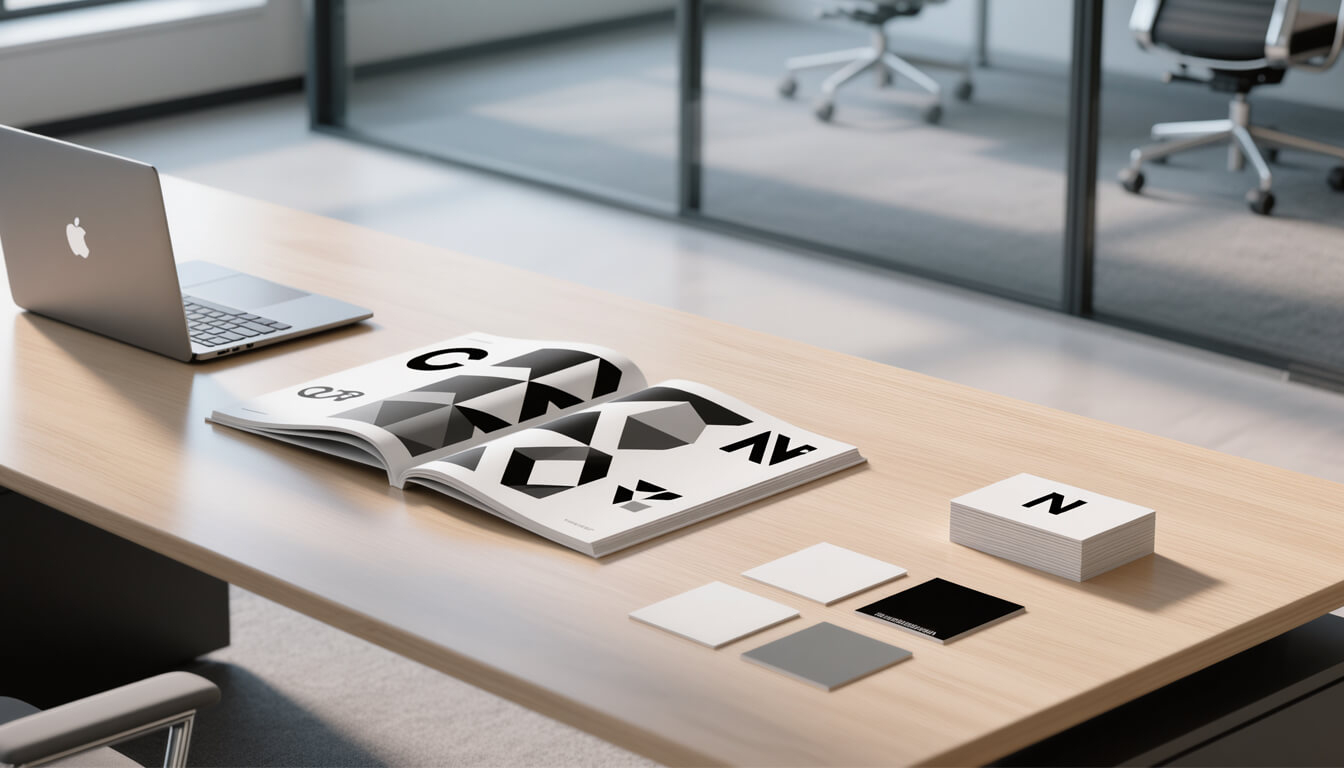For years, executives without design roots could rise into creative leadership by sheer business acumen or managerial skill. That era is ending.
As tech grows, the need for good design leadership gets bigger. Yet, those without design skills face big hurdles.
In today’s landscape, non-design leaders are being left behind—not because they lack ambition, but because modern design leadership demands more than spreadsheets and strategy decks. It requires fluency in design thinking, a deep respect for craft, and the ability to bridge creativity with business outcomes. Without that foundation, leaders are struggling to inspire teams, earn credibility, and deliver the innovation customers now expect as standard.
Key Takeaways
- Great design leadership drives business wins—not just nice visuals.
- Leaders without design skills are hitting a wall.
- Excellence in design is non-negotiable in a world that changes overnight.
- True leaders ignite, inspire, and motivate their teams to go further.
- Success comes from seeing both the challenges and the opportunities—and acting on them.
The Reality of Modern Design Leadership
The old ways of leading design are fading, and you are at the center of what comes next. With your design skills, you have the power to drive real business impact and redefine what leadership looks like. Technology now guides major decisions, but lasting success depends on something deeper: building digital design trust—with your customers, your teams, and your stakeholders.
The strongest design leaders bridge company goals with customer needs, creating clarity that sets them apart and pushes the business forward. To thrive, you must be willing to challenge outdated leadership models, embrace change, and experiment with new approaches.
When you do, your team shines brighter, your brand grows stronger, and your influence becomes undeniable. The reality of modern design leadership is this: it’s built on trust, adaptability, and the courage to break outdated molds. Focus there, and you won’t just keep pace with change—you’ll shape the future of your company.
Overcoming the Impostor Syndrome in Design Leadership
Design leaders often feel like impostors. But, focusing on excellence over recognition can change everything. By aiming for top results, you build confidence and trust.
Many design leaders have faced and beaten this feeling. They share their stories of hard work and growth.
Stories of Successful Transitions into Design Leadership
These stories show the power of design leadership skills. Skills like strategic thinking and team management are key. They help you reach your best and help the business grow.
It’s important to embrace your own path and strengths. Your value comes from leading and inspiring, not just designing.
Essential Competencies for Non-Designer Design Leaders
Being a good design leader is more than knowing design. It’s about having the skills to make business better. First, you need to know the business and what customers want.
Marketing design evaluation is key. It helps you see if your design works well. You use things like how happy customers are and if business is good.
Your job is not just to watch over design. It’s to make sure design is top-notch and meets business goals. To do this, work on skills that go well with leading.
See how design helps business and use facts to make choices. This builds trust with your team and others. It shows you really get design and business.
As you get better, remember your job is to make design better. Taking on this challenge makes you a great design leader.
Building Digital Design Trust Without Technical Expertise
Trust is key for good digital design leadership, no matter your tech skills. As a design leader, you must build and keep trust with your team. This is vital for success in design.
Trust-Building Communication Techniques
Good talking is essential for digital design trust. You must explain your design choices clearly. This way, your team gets why your designs are important.
Use simple words to talk about complex design ideas. This makes it easier for people to understand and like your work.
Showing you care about your team’s needs is also important. This makes everyone feel important and heard. It helps build trust and makes your team want to do their best.

Having regular design talks and feedback is a good idea. It helps everyone know what to do and work together. Being open and clear about how you design helps build trust. This trust is good for your whole team.
The Art of Championing Design Excellence
To truly make an impact, you need to champion design excellence within your organization. As a design leader, your role is not just to manage a team. It’s to inspire and motivate them to deliver exceptional design results.
By doing so, you can drive business success and create a competitive advantage.
Championing design excellence means fostering a culture that values design. It understands its impact on business outcomes. It involves educating stakeholders about the benefits of good design.
Ensuring that design is integrated into every aspect of the business is key.
Effective design leaders know how to balance creativity with business acumen. They ensure that design solutions meet both user needs and business goals. By promoting a culture of design excellence, you can enhance your team’s performance.
This contributes to the overall success of your organization.
To achieve this, focus on building a strong design team. Invest in design education. Advocate for design within your organization.
By championing design excellence, you can drive meaningful change. And achieve lasting impact.
Frameworks for Marketing Design Evaluation
To drive business results, design leaders need strong marketing design evaluation frameworks. It’s key to see how design affects customer happiness and business success.
Excellence over recognition should guide design leaders. Aim for outstanding results that help the business grow, not just get praise.
When to Trust Your Instincts vs. Deferring to Experts
As a design leader, it’s important to know when to trust yourself and when to ask for help. Trust your instincts when you really know your audience and the design situation. Ask experts when the design issue is complex or you’re not sure.
| Evaluation Criteria | Description | Metrics |
|---|---|---|
| Customer Satisfaction | Assessing how design meets customer needs | Surveys, feedback forms |
| Business Results | Measuring the impact of design on business outcomes | Conversion rates, sales data |
| Design Effectiveness | Evaluating the overall effectiveness of design efforts | A/B testing, design audits |
By using these frameworks and mixing instinct with expert advice, design leaders can check their marketing design work. This helps them achieve excellence in their teams.
Nurturing Invisible Excellence in Your Design Team
It’s key to grow invisible excellence in your design team. This helps your business win and stay ahead. As a design leader, you do more than manage projects. You build a culture that supports top-notch design.
Invisible excellence means the small, unseen parts of design that really matter. They greatly affect how users feel and how well your business does. To grow this, empower your team to aim for perfection in every little thing.
One big way is to make learning and getting better a big part of your team’s life. Give lots of feedback, celebrate wins, and learn from mistakes.
| Strategy | Description | Impact |
|---|---|---|
| Continuous Learning | Regular training and workshops | Enhanced design skills |
| Feedback Culture | Regular feedback sessions | Improved design quality |
| Celebrating Success | Recognizing team achievements | Boosted team morale |
With these steps, you can grow invisible excellence in your design team. This will help your business succeed and stay ahead.
Transformational Design Leadership Strategies
To get design excellence, leaders need to create a team that works together well. They must make sure design is part of every business part.
Breaking Down Silos Between Design and Other Departments
Good design leaders know teamwork is important for success. They work with marketing, product, and tech teams. This makes sure design fits with business goals.
Working together means more than just talking. It’s about making a plan that uses everyone’s best skills. Design leaders must be good at getting people to agree and change.

Using new design leadership ways can make your design team great. You need to be creative, work well with others, and motivate your team.
Being a design leader is more than just watching over design. It’s about making things better and new. By working together and breaking down walls, you can make design excellence happen and help your business grow.
Measuring Your Impact as a Design Leader
To lead in design, you must measure your impact on the business. Knowing how your design helps the company succeed is key. It helps you make better decisions and grow the business.
Marketing design evaluation metrics are important for measuring your impact. They show how customers see your design and how it affects the business.
| Metric | Description | Impact |
|---|---|---|
| Customer Satisfaction | Measures how satisfied customers are with your design | High satisfaction leads to loyalty and retention |
| Conversion Rate | Tracks the percentage of users who complete a desired action | Increased conversions drive business revenue |
| Brand Perception | Assesses how your design influences the perception of your brand | Positive perception enhances brand reputation and trust |
By focusing on these metrics, you can improve your design strategy. This helps meet customer needs and drive business success. Good design leaders use data to show the value of their work.
Measuring your impact is not just about numbers. It’s about seeing how your work helps the business grow. It’s about making changes to have more influence.
Conclusion: Embracing Your Unique Path in Design Leadership
As you move through design leadership, it’s key to know your strengths. This helps you succeed and stand out. It’s more important to do great work than to seek praise.
Good design leadership uses your skills to push for the best. This builds trust and helps you make a big difference. Your unique view is a big plus.
By being yourself and aiming for excellence, you’ll reach your goals. You’ll make a big mark in design leadership.